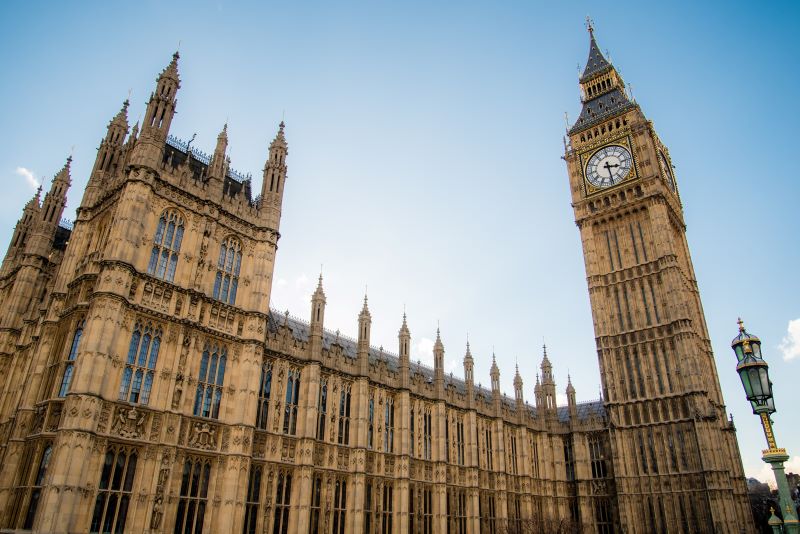Recommended

Blog Post
When then Prime Minister Boris Johnson dissolved the UK’s Department for International Development in the middle of a pandemic which pushed 70 million people into extreme poverty, he was—in part—trying to create a political distraction. The distraction didn’t last long for the general public, but in Whitehall, it is still rumbling on nearly four years after the announcement.
The continuing efforts to change how development is handled in Whitehall reflects how poorly thought out the merger was in the first place. Whether or not they supported it in principle, no-one thought it was done well: Andrew Mitchell regarded it as “an extraordinary mistake”; Shadow Foreign Secretary David Lammy called it “chaos” and “incompetence”; a survey of senior officials in 2021 found that just 7.5 pecent of those polled considered the merger a success.
What made it such a badly handled fiasco was that there was, apparently, almost no thought as to how the institutional structure of the UK’s development function could contribute to the achievement of the UK’s objectives. At root, the problem was not that any merger would be doomed to fail, but that the merger was decided and implemented without any real plan for success, or even any idea of what success would look like. The result was that as the UK has continued to work out what it wants its modern development function to do, it has had to constantly make secondary changes to the structure put in place at the time of the original merger. Andrew Mitchell deserves great credit for both sides of this: restoring some sense of purpose to UK development policy and changing the FCDO to better implement it.
But with an election looming, whoever forms the next Government will need to reassess both the purpose and the structures put in place to serve it. In a new paper, we set out and assess in the UK context the four broad models that have—to date—been used to manage development arrangements by most OECD donor countries. These models can be broadly ranked according to the independence they afford development policy, from less to more autonomy:

Source: Adapted from Figure 3.1 in the OECD’s “Managing Aid – Practices of DAC Member Countries”
The UK is currently shifting from a Model 1 structure (which is what the merger created) to a Model 2 structure, which is the new shape emerging from Andrew Mitchell’s reforms. While we argue that any of these models can be successfully deployed, depending on the objectives the UK seeks to achieve, we need to be clear about how they should be evaluated, and the key design features that should inform any new arrangement.
We proposed that any UK development function should be evaluated on the following five grounds:
- Fit with the current development and geopolitical context
- Policy setting and coherence on development
- Capacity to attract and retain development expertise
- Experience of partner governments and effect on partnerships
- Accountability for resources and impact
There is no clear winner across all of these criteria; every model has a different set of strengths and weaknesses. Nevertheless, from a careful look at how each model works in other systems, and how the UK system differs from them, a few key points are clear.
First, we can only evaluate these criteria with respect to a given set of clearly-articulated objectives. The recent UK White Paper for International Development is an attempt to set these out, but it remains to be seen how closely it binds other government departments that spend aid and affect development. Clarity of objective is a critical ingredient for any successful system.
Second, the nominal strength of the two merged models is that they allow for greater coherence on non-aid development policy by putting development and foreign affairs (and sometimes trade) under one leadership, with people working on each in close contact with each other. But in 2024, the policy set that has a material impact on development stretches beyond aid, diplomacy and trade (which in any case is a separate Ministry under current UK arrangements). Tax and policy on illicit financial flows; policy on climate change and environmental protections; policy on migration and global skills development; policy on global health and disease surveillance; and policy on defence and conflict prevention are all matters of material importance for development now. A single ministry covering all of this is inconceivable; so under any model, a separate and formal system for cross-government policy coherence is required.
Thirdly, one of the biggest strengths of an independent model (Model 4, and to a lesser extent Model 3) is that it has the strongest lines of accountability for resources and impact. But this is only true to the extent that the independent department has control over policy and resources; in the UK this has become steadily less true over the last decade, and accountability has degraded accordingly. Reform of how the aid budget is allocated and accounted for will be required, whichever model is selected.
And finally, one of the UK’s calling cards in international development has been the quality of its staff working on it. These capabilities have been degraded substantially over the last four years, and not all of these models are equally well-equipped to rebuild and retain development networks and expertise. The UK’s standing in international development depends on the quality of who works on it, not just its budget.
These observations suggest which design features will matter most for any reform (or even continuation) of the UK’s development model:
- Clarity of objectives, which requires political leadership independent of model choice, and a means to cascade such objectives through the system.
- Predictability of and accountability for resources, which is in the gift of the Treasury. Though different models can sustain different and more or less effective lines of accountability, the Treasury must ultimately be part of the solution here, providing a better, more predictable system than the chaos it has imposed on UK development policy in the last half-decade.
- A central mechanism for strategic coherence, since no model can encompass everything that affects development (not every UK interest that development in turn affects)
- Capability development and retention, which is a common characteristic across the best development organizations: they are notable for the excellence of their people, which in turn feeds programme design, policy advice, and influence.
- And finally, the administrative and legal basis of the system must be relatively simple, since the appetite for more long, drawn-out change among development bureaucrats, and indeed the public, is limited.
To be clear: these design principles are compatible with any model chosen. Certain aspects will be easier or harder under different models, but they can all be achieved. What remains is that the government (either now or after an election) shows the political will and leadership to force these changes through. The most critical are the clarity of objectives and fixing the resource and accountability framework. These were completely shattered by the merger, though there were cracks appearing even before. Once these are fixed, they will find the challenges of capability retention, and rebuilding and coherence, easier to crack.
This is the challenge that faces political leaders in the months and years to come. Will they meet it?
Disclaimer
CGD blog posts reflect the views of the authors, drawing on prior research and experience in their areas of expertise. CGD is a nonpartisan, independent organization and does not take institutional positions.






